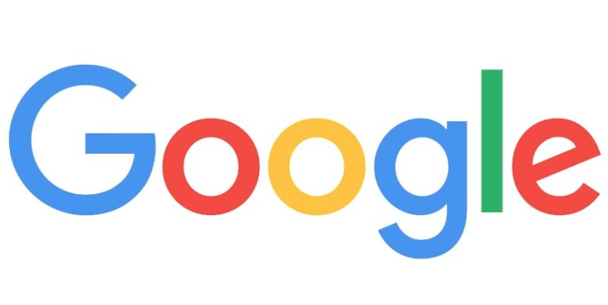Google to launch a host of new features including attribution, location extensions and machine learning for marketers
Google is launching a whole host of features for marketers such as attribution modelling, location extensions for YouTube ads and more.

Google announces new products before Google Marketing Next
In a blog post before the Google Marketing Next event, Sridhar Ramaswamy, senior vice president, advertising & commerce, Google, unveiled the new features awaiting marketers. This follows the efforts by the search giant to shore up brand safety concerns.
Google will be launching a new product, Google Attribution, to help marketers measure the impact of marketing across devices and channels in one place. Google Attribution will have a free version, as well as an enterprise version called Attribution 360.

Google Attribution looks to solve the complexity and poor integration of attribution tools face, with integration with AdWords, Google Analytics and DoubleClick Search.
“We really focused on simplicity for Google Attribution…you basically connect your accounts, import your data, choose the attribution model that works best, then you can export the results through AdWords. You can immediately optimise your campaigns through the attribution models. Something that took months to do, we’ve reduced it down to minutes,” said Babak Pahlavan, senior director of product management, Google.
The difference in Attribution 360 is that it offers more models and marketing channels to marketers.
“Seamlessly integrates with platforms like DoubleClick campaign manager, allows marketers to bring in third party data not based on Google campaigns. As a bonus, Attribution 360 also have the capability to measure TV, marketers now can use the tools to understand the impact of their TV ads on things like website visits or searches,” said Babak.
“Both of them are in beta and will be rolled out to advertisers in the next few months,” he added. Google Attribution will be rolled out in the US in this quarter, with other markets to follow in the subsequent quarters.
Location location location
Google is also launching promoted places and local inventory ads for retailers to promote special offers and show what’s in stock nearby. YouTube ads will also allow viewers to find a store via location extensions.
“We have shown that online advertising is driving consumers into stores,” said Jerry Dischler, vice president of product management for AdWords, Google.
“We want to help consumers who are online to find something in the physical world, we have a number of formats that work across search and maps that are designed to show what is in stores and can drive people into stores,” he added.
Store visits measurement will now also be available for YouTube TrueView campaigns. Store visits measurement is currently available in 17 markets: US, Canada, Australia, United Kingdom, Germany, Netherlands, Italy, Brazil, Mexico, Spain, Japan, Sweden, Norway, Denmark, Austria and Switzerland.
“Today Google’s store visits measurement is the largest scale of its kind in the world, this product is powered by machine learning and unique data powered by our Google maps product,” said Dischler.
“We are also expanding our local ads formats to video, now you can go directly from a true view video ad on YouTube, which will now show directions, store business hours and more. More importantly we’ll have the same store visit technology for the video ads so advertisers can measure all the way from a video view to store visits,” he added.
However, should a region or country have users that are more privacy sensitive and choose not to share their Google Maps location data history, the store visit measurement product will be less effective.
Closing the loop
Google’s final launch, store sales measurement might be something marketers have been searching for to close the loop from ad click to purchase. The product will allow marketers to measure in-store revenue in addition to the store visits sent by search and shopping ads.
“We developed a new product in the US where advertisers will be able to measure store sales impact of online advertising automatically with no integration. If we have relevant sale information for an advertiser, it will just appear on their AdWords account, just like store visits and online conversions,” said Dischler.
“Our partnerships cover 70% of all credit and debit card transactions in the United State,” he added.
Marketers will also be able to add loyalty card data at the point of sales to Google AdWords, which will be available globally at launch according to Dischler.
“Both of these products like all of our measurement products are privacy-safe, we never use ay user’s ad click information and only report anonymised aggregated figures,” he added.
According to early research by Google, consumer who click on a search ad before visiting a store are 25% more likely to buy something when they are there and spend 10% more on average.
“This means that people who click on Google ads, drive 40% more value in store than the average customer walking in through the door,” said Dischler.

“Another example from an advertiser in our beta program, Virgin Holidays, saw twice the profit generated when they considered their store sales data in addition to their online sales data, which really improved their return on investment,” he added.
Machine learning will play a big part in these products as well according to Dischler.
“Our models has taken hundreds of signals such as WiFi strength, Bluetooth beacon information and visit duration to figure out what signals the most predictive store visit. What this allows us to do in really dense cities like Tokyo, Japan or Sao Paulo, Brazil where many business locations are small and close together, allows us with 99% confidence say a store visit occurred,” said Dischler.
“We also use machine learning to avoid over counting situations, where a user walks into a store to get to a parking lot or when an employee goes into a store to work for a day, we can eliminate those cases to get the only true store visits from customers,” he added.

